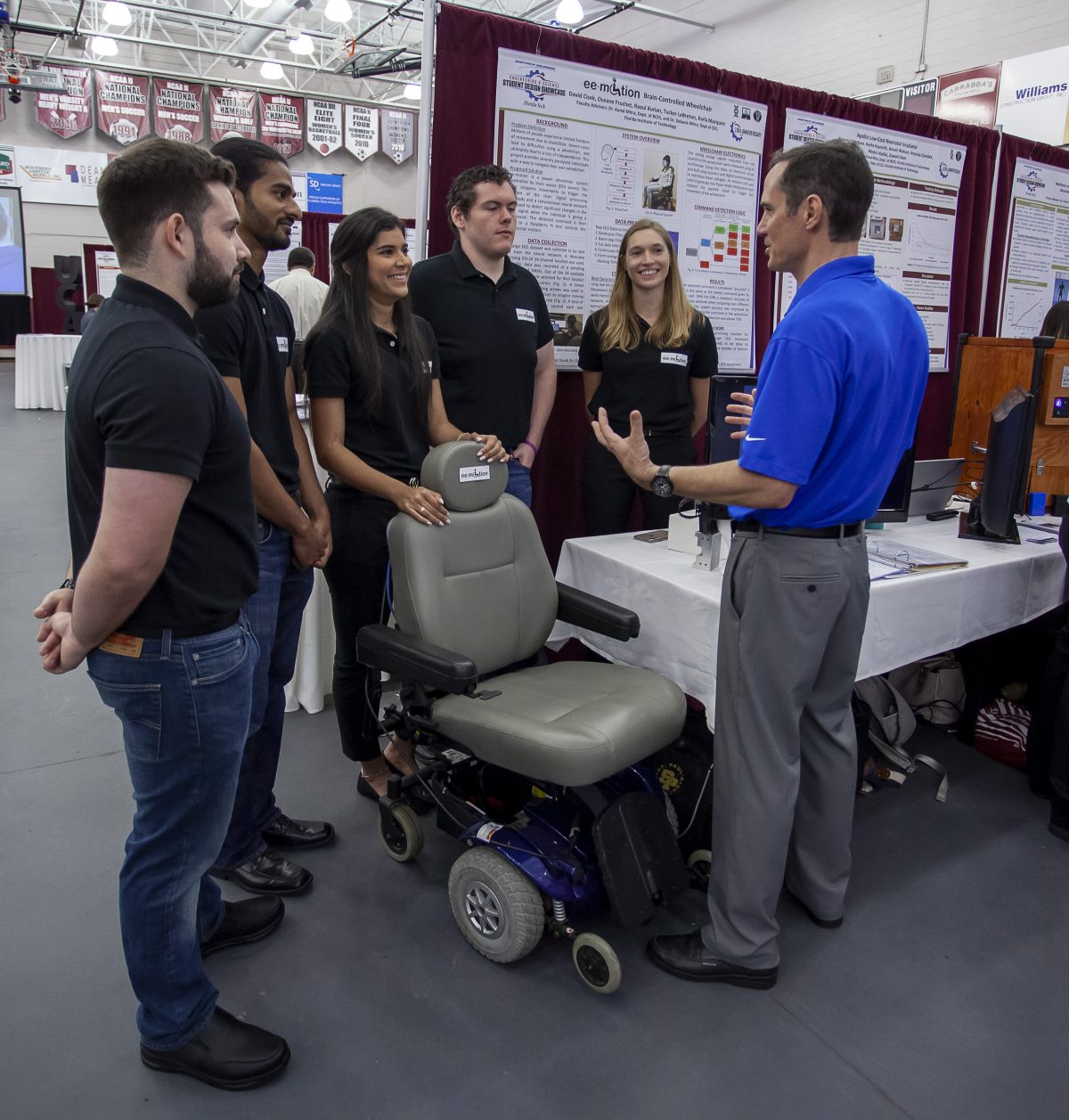Biomedical Engineering Students Put a New Spin on Mind Control
A group of Florida Tech biomedical engineering students have, in fact, developed a way for people to move themselves from one side of a room to the other using only their minds.
David Cisek, Oceane Fruchet, Raoul Kurian, Tucker LeBreton and Karla Marquez have developed a brain-controlled wheelchair for patients with severe paralysis called ee.motion.
“The user thinks about moving an arm or a leg, the system interprets the brainwaves and the chair moves accordingly,” says Cisek, ee.motion team leader.
Mind Over Matter
The inspiration for ee.motion came from Fruchet’s experience as a physical therapist for patients with pseudocoma, or “locked-in syndrome.” Patients with locked-in syndrome have cognitive awareness but cannot move or express themselves verbally. With these patients in mind, Fruchet came up with the idea of controlling a wheelchair with the mind rather than movements.
“Because they cannot move independently, they constantly have to rely on caregivers, family and friends. Our project aims to help these people regain the ability to move on their own by using their thoughts to move their wheelchair,” Cisek says.
Letting Your Imagination Take the Wheel
Interpreting brain waves proved challenging because the signals are not only small, they are also hard to distinguish from each other. The team decided the best course of action was to use motor imagery to provide mental commands and the power of the patient’s imagination to move the wheelchair.
“We were surprised to discover that the brain waves recorded when the user was resting weren’t that different than when they were sending a mental command,” Cisek says. “It made our job of detecting these commands significantly harder, and we had to update our concept and implement additional eye-blink commands.”
While brain wave detection proved challenging, they found that the technology went far beyond just controlling a wheelchair.

“The successful interpretation of brainwaves could have many more applications, from controlling a prosthetic limb to playing video games using your thoughts,” Cisek says.
There are no wheelchairs on the market that can operate without some kind of movement initiated by the user. Since quadriplegics often are not capable of using a joystick or pushing a controller, ee.motion would offer a unique opportunity for patients to regain some of their independence.
After a successful prototype showing during the 2019 Northrop Grumman Student Design & Research Showcase, the team took home the Design and Innovation Award.

“The main takeaway for us would probably be to believe in your ideas, no matter how crazy they might seem at the beginning, and to be determined to make them happen.”





